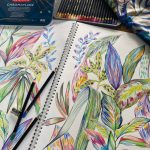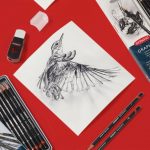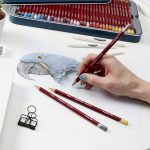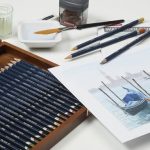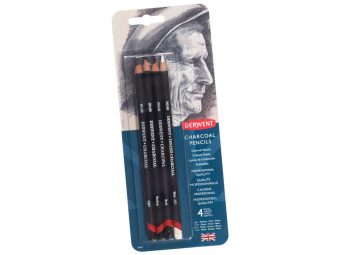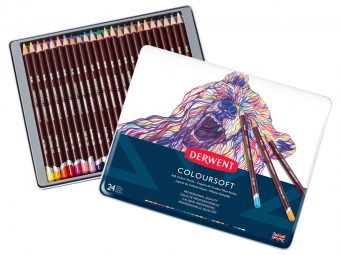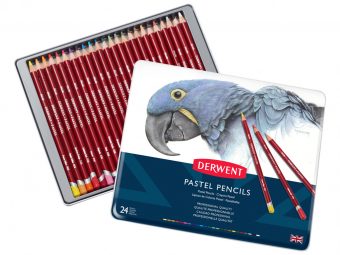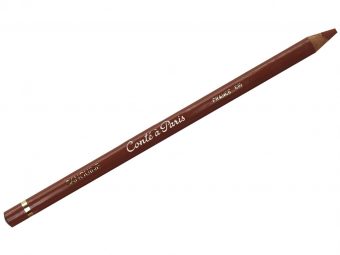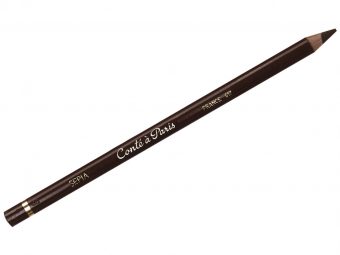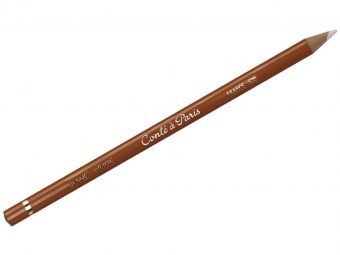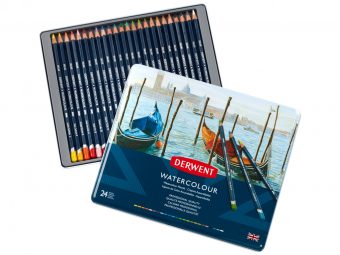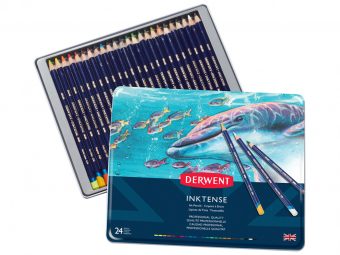When you walk into an art supply store and look at the pencil shelf, the choice can be overwhelming – coloured pencils, pastels, watercolours, drawing and sketching pencils. How are they all different and which one to choose? In this post, we’ll give you an overview of the main types of pencils, their characteristics and their uses, to make your orientation in the world of pencils a little easier.
Graphite pencils
The most classic type of pencil that everyone is familiar with to some extent. It creates a plain grey line, which can be fine and light or dark and soft, depending on the hardness of the pencil. Graphite pencils have a graphite and clay core and their hardness is indicated by a combination of letters: H (hard), B (black) and HB (medium).
- H-pencils: hard, give a bright and sharp line. Suitable for technical drawings, geometric sketches or any work where precision is required.
- B-pencils: soft, with a darker line, good for shading, sketching and freer drawing.
- HB or F: Neutral mid-range – good for everyday writing or quick sketching.
Hardness progresses on both sides of the scale: 2H, 4H, 6H become progressively harder and brighter, while 2B, 4B, 6B become softer and darker. Artists often combine different hardnesses to achieve shades and contrast.
Read more about graphite in our Graphite 101 blog post.
Coloured pencils
Coloured pencils are for many people their first exposure to drawing and colour – they are used in children’s drawings as well as in professional illustrations. Unlike graphite pencils, their cores are made from a mixture of colour pigment, a binder (e.g. wax or oil) and fillers.
- Ordinary coloured pencils: wax-based, readily available and well-suited for layering. Softer pencils give a more intense colour, while harder pencils are more precise and have a cleaner line.
- Professional colour pencils: higher pigment content and better layering. These include both wax-based and oil-based pens, which are typically even softer, and greasier and leave a richer, deeper colour on the paper. Suitable for detailed work, smooth transitions and layered drawing.
When working with coloured pencils, it’s worth bearing in mind that different manufacturers offer products of quite different quality and feel – experimenting will help you find the right set for you.
Watercolour pencils
Watercolour pencils look like regular coloured pencils, but the pigment inside is water-soluble. This means you can draw with the pencil just like you would with a coloured pencil, but when you go over it with a damp brush, the lines spread out and the effect becomes similar to watercolour.
- You can use it dry or wet – first, you draw, then you blend.
- Good for sketching before painting, creating light layers of paint or achieving a watercolour effect without using separate colours.
- The choice of paper is particularly important here – a thicker, more water-resistant surface is recommended so that the paper doesn’t wrinkle or degrade.
- Watercolour pencils with ink (Derwent Inktense): after wetting and drying, the lines of this pencil become waterproof, allowing you to create layered drawings and ensuring water resistance even after drying. These pencils are also great for drawing on fabric, for example, as they have the added benefit of water resistance.
Watercolour pencils offer a nice transition from drawing to painting and are well-suited for sketchbooks or finished works
Pastel pencils
Pastel pencils combine the precision of coloured pencils with the softness of pastel. Their core is made of pigment, binder and a small amount of filler, which makes them softer and easily dispersible. Unlike a regular coloured pencil, they do not leave such a sharp line, but rather a smooth, even colour surface.
Unlike wax-based pencils, pastel pencils feel dry and slightly rough – more powder is released onto the paper when drawing, making them particularly suitable for blending. It’s this chalky texture that allows you to create smooth transitions and atmospheric shades.
Pastel pencils are well suited to layering – because they are easily dispersible, you can create soft transitions and shadows. These pencils are the perfect choice for creative artists who appreciate a free but controlled drawing style.
Charcoal pencils
Charcoal pencils are a great choice for artists who want to achieve darker and more dramatic lines. These pencils contain a blend of crushed charcoal and a binder that gives them a special softness and darkness.
- Soft charcoal pencils: give a strong black line that is easy to blend. Ideal for shading, dramatisation and expressive works.
- Hard charcoal pencils: provide a more precise line, suitable for more technical work and detailing.
Drawing with charcoal pencils is often in dirty and dark tones, allowing the artist to create rich shades and highly expressive works. It is advisable to use special paper that can withstand more intense application and dispersion.
Read more about charcoal in our Charcoal 101 blog post.
Sketching pencils
Sketching pencils are similar to charcoal pencils, but they offer warm tones such as sanguine and sepia, which create a soft and painterly result. These pencils are an ideal choice for under-drawings and sketches as they are not too dark and don’t leave too strong a mark, but still provide enough tone and texture.
- Sanguine shades: the warm reddish tones make these pencils perfect for drawing figures and people, giving them a lively and natural look.
- Sepia shades: the brownish tones work well for landscapes and portraits, giving them a timeless and soft look.
Drawing with sketching pencils is a great way to achieve a natural and close-to-nature effect, adding warmth and depth to your drawing.
Summary
The world of pencils is rich and varied – each type of pencil has its own special properties and uses. From the classic graphite, suitable for everyday drawing, to the professional coloured pencils and pastels that open up possibilities for creativity and detail, each pencil brings its own colour and feel to the work. Watercolour and charcoal pencils can also offer completely new ways of expressing and creating.
Whether the goal is drawing, painting, sketching or perfect artwork, the right pencil can make the process more enjoyable and the results more accurate. Experimenting with different pencils, getting to know their characteristics and adapting your execution can help you find just the right style and the best tools for the job.


